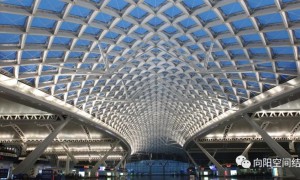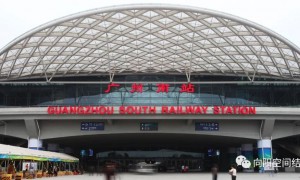L. 正常使用极限状态设计
本章适用于结构及其部件正常使用极限状态的确定,包括挠度、侧移、振动、风致运动、热变形和连接滑移。
本章组织如下:
L1.一般规定
L2. 变形
L3. 侧移
L4. 振动
L5. 风致运动
L6. 温度膨胀和收缩
L7. 连接滑移
L1. 一般规定
正常使用极限状态是指在正常情况下,建筑物的功能、外观、可维护性、耐久性和居住者的舒适性得以保持的状态。应适当考虑结构的预期功能,选择适当的结构性能限值(如最大挠度和加速度),应使用适当的荷载组合。
使用说明:正常使用极限状态、使用荷载及荷载组合见《建筑物和其他结构的最小设计荷载规范》(ASCE/SEI 7)附录C及条文说明。本章中的适用性能要求与ASCE/SEI 7附录C一致。正常使用荷载是指在任意时间点作用在结构上的荷载,通常不作为标准荷载。
第C章所述的直接分析法中使用的降低刚度值不适用于本章的规定。
L2. 挠度
应限制结构构件和结构体系统的挠度,以免影响结构的使用。
L3. 侧移
应限制侧移,以免影响结构的使用。
L4. 振动
应考虑振动对舒适性和结构功能的影响。要考虑的振动源包括人员荷载、振动机械和为结构确定的其他振动源。
L5.风致运动
应考虑建筑物风致运动对居住者舒适度的影响。
L6. 温度膨胀和收缩
设计时应考虑建筑物热膨胀和收缩的影响。
L7. 连接滑移
如果螺栓连接处的滑移可能导致变形,从而损害结构的适用性,则设计中应包括连接滑移的影响。在适当情况下,连接件的设计应防止滑动。
使用说明:有关摩擦型连接的设计,请参见第J3.8节和第J3.9节。连接移滑的更多信息,请参阅RCSC《高强螺栓连接技术规范》。
CHAPTER L DESIGN FOR SERVICEABILITY
Thischapter addresses the evaluation of the structure and its components for theserviceability limit states of deflections, drift, vibration, wind-inducedmotion, thermal distortion, and connection slip.
Thechapter is organized as follows:
L1.General Provisions
L2.Deflections
L3.Drift
L4.Vibration
L5.Wind-Induced Motion
L6.Thermal Expansion and Contraction
L7.Connection Slip
L1. GENERAL PROVISIONS
Serviceabilityis a state in which the function of a building, its appearance,maintainability, durability, and the comfort of its occupants are preservedunder typical usage. Limiting values of structural behavior for serviceability(such as maximum deflections and accelerations) shall be chosen with due regardto the intended function of the structure. Serviceability shall be evaluatedusing applicable load combinations.
User Note: Serviceability limit states, serviceloads, and appropriate load combinations for serviceability considerations canbe found in Minimum Design Loads and Associated Criteria for Buildings andOther Structures (ASCE/SEI 7) Appendix C and its commentary. The performancerequirements for serviceability in this chapter are consistent with ASCE/SEI 7Appendix C. Service loads are those that act on the structure at an arbitrarypoint in time and are not usually taken as the nominal loads.
Reduced stiffness values used in the direct analysismethod, described in Chapter C, are not intended for use with the provisions ofthis chapter.
L2. DEFLECTIONS
Deflectionsin structural members and structural systems shall be limited so as not to impairthe serviceability of the structure.
L3. DRIFT
Driftshall be limited so as not to impair the serviceability of the structure.
L4. VIBRATION
Theeffect of vibration on the comfort of the occupants and the function of thestructure shall be considered. The sources of vibration to be consideredinclude occupant loading, vibrating machinery and others identified for thestructure.
L5. WIND-INDUCED MOTION
Theeffect of wind-induced motion of buildings on the comfort of occupants shall be
considered.
L6. THERMAL EXPANSION AND CONTRACTION
Theeffects of thermal expansion and contraction of a building shall be considered.
L7. CONNECTION SLIP
Theeffects of connection slip shall be included in the design where slip at boltedconnections may cause deformations that impair the serviceability of thestructure. Where appropriate, the connection shall be designed to precludeslip. User Note: For the design of slip-critical connections, see Sections J3.8and J3.9. For more information on connection slip, refer to the RCSCSpecification for Structural Joints Using High-Strength Bolts.






